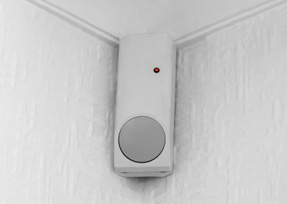How a passive infrared sensor works:
A PIR sensor functions by detecting a change in temperature in the room where it is installed. These sensors compare the variation in heat temperature when a person is in the room and the average temperature. A PIR sensor is limited to the line of sight and is not capable of looking through obstacles. Therefore, care should be taken in understanding the characteristics of the space when installing a PIR sensor, and how the sensor can cover it in the optimum manner. PIR sensors are best suited for small rooms with few obstacles. They are ideal for rooms where people are constantly moving in and out of the room.
The types of PIR and how to install them for an optimal result:
The average coverage area of a PIR sensor is 15 feet. The PIR sensor finds it difficult to distinguish minor movements beyond this coverage area. It has been found that if a person is sitting very still within the range of a PIR sensor, the sensor is likely to switch off the lights as it fails to recognize the presence of the inhabitant in the room. Care should also be taken that the sensor does not cover the area beyond the door so that it does not confuse a passer-by with an occupant, and trigger on the lights unnecessarily whenever someone walks past the room. PIR sensors may be ceiling mounted or wall mounted. A ceiling-mounted sensor can cover a larger area as compared with a high-mounted sensor, and has less probability of obstacles coming in the way of the sensor’s path. Placing high wall-mounted sensors in corners also helps reduce the effect of obstacles to a large extent. These sensors should not be mounted on walls which experience vibration (or near HVACs) as any such motion may trigger the PIR sensor to switch on the lights unnecessarily.
Time delays for a passive infrared occupancy sensor:
Setting time delays are very important to PIR occupancy sensors as it takes into account the presence of a person in the room with minimal activity and therefore, increases the effectiveness of the sensor. A very short time delay will result in continuous on – off cycles, which can become a nuisance. A very long time delay will mean a waste of energy. An ideal setting in a factory environment is 5 to 10 minutes. In some situations, a time delay of 15 minutes may also be recommended.










